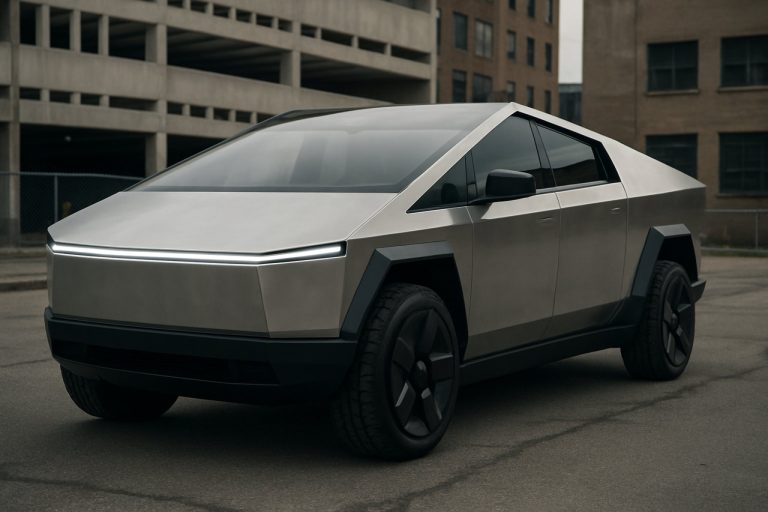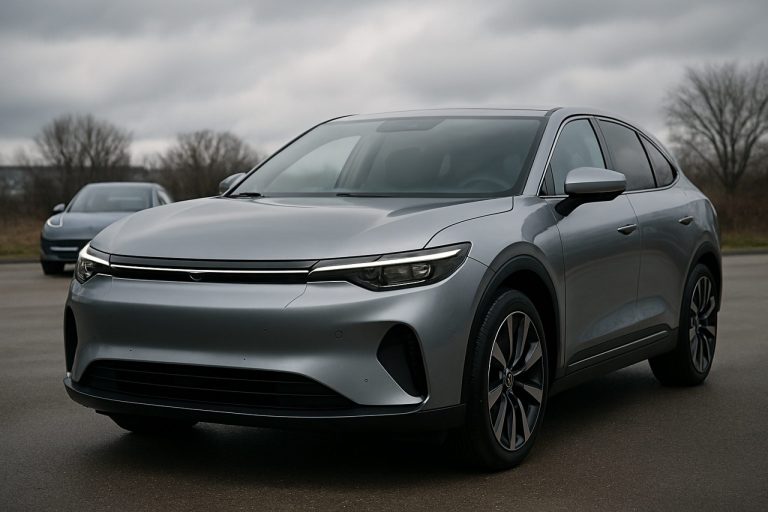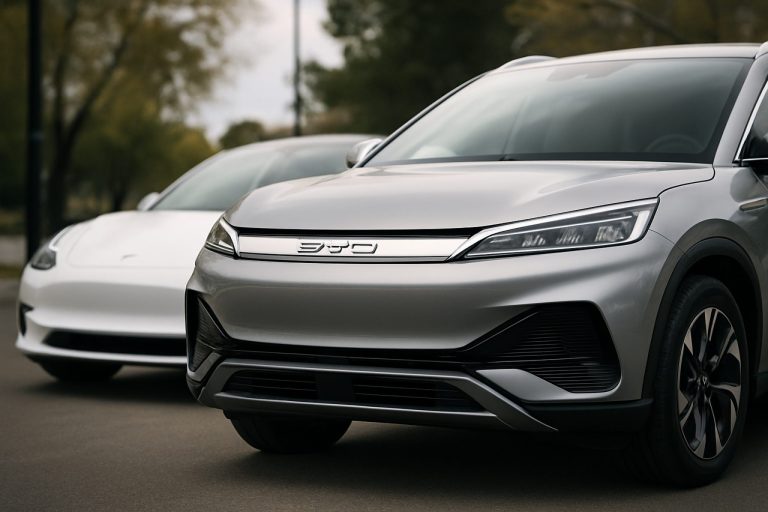
- BYD has overtaken Tesla in monthly electric vehicle (EV) registrations in Europe, signaling a major shift in EV market trends.
- BYD’s rapid growth—169% year-over-year in Europe—contrasts sharply with Tesla’s declining registrations both in Europe and China.
- In China, BYD achieved nearly 68,000 weekly units, while Tesla experienced a 69% decrease, highlighting BYD’s strong local dominance.
- Consumer surveys show BYD is now the most preferred EV brand in China, with Tesla’s popularity falling globally and being surpassed by established brands in Europe.
- BYD’s competitive pricing, new model launches, and aggressive global expansion drive its rising success.
- The new EV era is defined by dynamic competition, shifting consumer values, and emphasis on affordability, reliability, and innovation for all.
https://youtube.com/watch?v=AhQLhqxAtEk
A gust of change sweeps through the electric vehicle landscape, reshaping perceptions of power, innovation, and consumer desire. Under China’s shifting skyline and Europe’s bustling boulevards, one name reverberates—BYD. The automotive powerhouse, celebrated for cutting-edge technology and relentless ambition, is leaving indelible tire tracks where Tesla once held uncontested dominion.
It’s not just numbers—it’s a narrative of momentum. BYD registered 7,231 electric vehicles in Europe last month, outpacing Tesla’s 7,165 and underscoring a 169% year-over-year jump in a market where consistency, not volatility, signals trust. While Tesla’s European registrations shrank by half, BYD’s growth stormed ahead, leaving market watchers stunned at the scale and speed of the encroachment.
Back in China, where urban streets surge with the promise of tomorrow, BYD almost eclipsed 68,000 units in a single week. Tesla, in a sharp contrast, grappled with an alarming drop—just over 3,000 registrations during the same period, a 69% plummet that rippled through investor circles and tech forums alike.
What’s driving this tectonic shift? Consumers—and their expectations. A recent survey of over 10,000 participants revealed that BYD is now the most preferred EV brand in China, dethroning Tesla, whose “top choice” rating slipped from 18% to 14% within a year. Globally, Tesla’s sheen has dulled; willingness to consider a Tesla sits at 36%—down from last year’s 39%—while established European titans like BMW and Audi steadily overtake Tesla in popularity across Europe.
BYD’s success lies in a multi-pronged strategy. The automaker relentlessly pushes prices down on its bestsellers, making electric mobility accessible for more drivers. Sleek launches like the Sealion 7 and the continent-ready Dolphin Surf (sold in China as the Seagull) broaden its appeal, enticing drivers with style and practicality. Meanwhile, BYD accelerates efforts to establish a robust presence overseas, notably casting its gaze towards European streets where environmental ambition meets local enthusiasm.
Tesla, once the undisputed champion, faces not just stiffer rivalry, but evolving customer values—innovation for all over innovation for the few. EV shoppers now prize affordability, reliability, and local adaptability as much as revolutionary tech. In this climate, traditional automakers—BMW, BYD, Kia, Toyota, and GM—are praised for their future-forward strategies, according to analysts. Delaying electric innovation, experts argue, is a nonstarter for brands that seek global loyalty.
For anyone caught between a BYD and a Tesla, the decision spotlights a turning point in automotive history. The age of one-lane dominance is closing, replaced by dynamic competition where new names stand on equal footing with legends.
The key takeaway: In the electric age, customer loyalty is earned through relentless innovation, value-driven engineering, and the courage to expand beyond borders. The race is not just about who leads, but who adapts—and BYD is proving it can electrify that journey.
Learn more about the players transforming mobility at BYD and Tesla.
BYD Overtakes Tesla: What You Need to Know About the Global Electric Vehicle Revolution
Introduction
The electric vehicle (EV) sector is witnessing a seismic shift. The source article highlights BYD’s remarkable growth in China and Europe, toppling Tesla’s dominance. But what are the deeper dynamics, hidden trends, and must-know facts for consumers and industry watchers? Below, we dig further—exploring expert insights, unveiling real-world use cases, comparing features, and surfacing pressing questions about the future of EVs.
—
Quick Facts and Latest Data Beyond the Source
– Global EV Market Boom: According to the International Energy Agency (IEA), global electric car sales reached 14 million in 2023, and are expected to top 17 million in 2024, with China and Europe leading the surge ([IEA](https://www.iea.org)).
– BYD’s Tech Advantage: BYD’s proprietary Blade Battery, known for superior safety and durability, has become a benchmark for affordable, long-range EV batteries.
– Gigafactories Expansion: BYD plans to build manufacturing plants in Hungary and Brazil to ramp up its international presence. Tesla’s Berlin Gigafactory remains its main European hub, but BYD’s diversified manufacturing is seen as a rapid scaling advantage.
– Comprehensive Product Line: While Tesla’s key models are the Model Y, Model 3, S, and X, BYD offers dozens of models including hybrids, sedans, compacts, and luxury SUVs, serving both low- and high-end markets.
—
Features, Specs & Pricing Overview
| Feature | BYD (e.g., Dolphin) | Tesla (e.g., Model 3) |
|———————|—————————-|—————————-|
| Price (Europe) | From ~€30,000 | From ~€40,000 |
| Battery Tech | LFP Blade Battery | NCA/LFP Battery Cells |
| Range | 300-520 km (WLTP) | 430-629 km (WLTP) |
| Warranty | 6 yrs / 150,000 km | 4 yrs / 80,000 km |
| Features | ADAS, smartphone keys, OTA | Autopilot, FSD (extra $) |
| Charging | Fast (80% in 30-40 mins) | Supercharger (20-30 mins) |
| Manufacturing | China, expanding globally | US, China, Europe |
—
How-To: Choosing the Right EV
1. Assess Usage: City drivers might prefer BYD’s affordable, compact models, while long-distance travelers could favor Tesla’s larger battery options.
2. Battery Considerations: Check battery type (LFP vs. NCA) for longevity and charging habits.
3. Network Access: Consider fast-charging networks—Tesla Supercharger is robust, but BYD models are increasingly compatible with pan-European standards.
4. Warranty & Service: BYD offers stronger warranty terms in some markets.
5. Budget Planning: Factor in incentives (tax breaks, discounts) available in your country.
—
Real-World Use Cases
– Urban Mobility: BYD’s compact EVs (e.g., Seagull/Dolphin Surf) are praised for city commutes, affordable ownership, and easy maintenance.
– Family Needs: Tesla’s Model Y or BYD’s Tang serve well for families needing more space, high safety ratings, and advanced adaptive cruise features.
– Fleet Operators: BYD is a leading supplier of electric buses and taxis in over 70 countries, demonstrating commercial reliability.
—
Market Forecasts & Industry Trends
– Falling Prices: Increased competition, notably from BYD and other Chinese automakers (NIO, Xpeng), is expected to further lower EV sticker prices by 2025—levelling the field for entry-level buyers.
– Local Manufacturing: EU policymakers are pushing for “made-in-Europe” EVs to reduce reliance on imported cars, affecting BYD and Tesla’s localization strategies.
– Tech Convergence: Features like ADAS, V2G (vehicle-to-grid integration), and enhanced infotainment systems are rapidly becoming standard even in lower-priced models.
—
Reviews & Comparisons
– BYD Dolphin: Multiple European reviewers applaud its interior spaciousness, quiet ride, and value for money. Downsides: less sporty handling than Tesla.
– Tesla Model 3: Still leads with driving dynamics, over-the-air software updates, and unique infotainment experience, but is criticized for inconsistent build quality and higher costs.
– Experts’ View ([Reuters](https://www.reuters.com), [Car and Driver](https://www.caranddriver.com)): Analysts note BYD’s quality gap narrowing, with Tesla’s former tech exclusivity eroded by quick Chinese innovation cycles.
—
Controversies, Limitations & Security
– Tariff Wars: Europe is considering tariffs on Chinese “state-subsidized” EVs, potentially raising BYD prices significantly in 2024.
– Data Security: Both BYD and Tesla have faced concerns over how user data is managed, with European regulators demanding compliance with strict GDPR norms.
– Battery Recycling: BYD has announced ambitious recycling partnerships, but the global EV sector still faces logistical challenges in “closing the loop” on battery supply chains.
—
Pros & Cons Overview
BYD Pros:
– Lower entry price
– Strong battery safety
– Rapid, global expansion
– Versatile model range
BYD Cons:
– Less brand prestige in the West
– Tariff and regulatory headwinds in Europe
– Fewer public fast-charging networks than Tesla (currently)
Tesla Pros:
– Premium brand image
– Strong Supercharger network
– Advanced driver assistance options
Tesla Cons:
– Higher prices
– Recent decline in European and Chinese market share
– Mixed reliability reports
—
Pressing Questions Answered
Why is BYD growing so fast?
– Aggressive pricing, broad vehicle range, proprietary battery tech, and rapid response to consumer demands in emerging and developed markets.
Is Tesla falling behind globally or just in Europe and China?
– Tesla remains the global profit leader, but is losing market share to Chinese and European competition in both volume and consumer mindshare.
Can BYD’s success last?
– Analysts believe sustained investment in local manufacturing, regulatory compliance, and aftersales service will be crucial for BYD’s continued momentum in Europe and beyond.
—
Actionable Recommendations
1. Shopping for an EV? Test drive both BYD and Tesla, evaluating local incentives and total cost of ownership—not just sticker price.
2. Stay Updated: Monitor tariff policies and new model releases, as these can rapidly change the landscape and affect your resale value.
3. Consider Charging Needs: In areas with strong Tesla Supercharger presence, Tesla may still be convenient, but BYD’s compatibility with public networks is improving fast.
4. Battery Safety First: Prioritize models with LFP or Blade batteries if safety and long life matter most.
—
Conclusion
The age of the single EV king is over. BYD’s meteoric rise challenges Tesla, reshaping global perceptions about value, technology, and who will drive the next generation of mobility. Savvy drivers and investors should watch both brands closely—and expect even more innovation and competition ahead.
Learn more directly from the manufacturers at BYD and Tesla.



